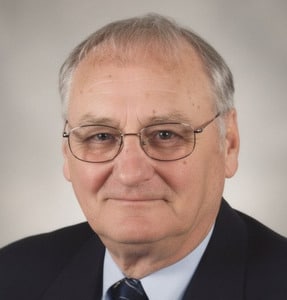Karen Warmack, who was serving as the Interim Director of Polk County Social Services, following the resignation of Peter Sedgeman was named as the next director this week. Rather than open the hiring process, the Polk County Commissioners voted to fill the position with Karen Warmack, who was serving as the Interim Director for the second time in less than a year.
Warmack was the county’s second choice last year when Sedgeman was hired, and Commissioner Warren Strandell called it an obvious choice to get the issue behind the county. “Karen was one of the candidates when Peter was selected about a year ago,” said Strandell. “She was a pretty close second choice at that point. So, it was pretty obvious to get to her right away and get this issue out of the way and behind us.”
While all the commissioners were in support of Warmack’s hiring, there was considerable discussion and disagreement about where the power to hire a department head lies. No one would comment after the meeting on the debate on who’s responsibility it is for hiring the department heads. However, during the discussion, Commissioner Joan Lee questioned whether enough had been done to provide Sedgeman with the guidance and training he needed to be successful in the position. Adding she felt – we’ve been backed into a corner – and that this was a return to the status quo.
Lee also questioned how much the Social Services staff was willing to work with an outsider. Polk County Administrator Chuck Whiting indicated he thought the social service staff did everything they could do, adding “I’m not sure what else I could’ve done.”
The county board also approved two additional positions to be posted, a .8 FTE Wellness Coordinator with Public Health and a full-time custodial position with facilities. The commissioners also passed a resolution stating there were no changes necessary from the county to the City of Fertile’s draft Airport Zoning Ordinance they reviewed last month. Travis Johnson, a Polk County resident, enquired about the county’s setbacks in its zoning ordinance and his options for building within a setback. He was advised the best course of action would be to work with Planning and Zoning Administrator Jake Snyder on his plan’s to find common ground between his designs and the ordinance.
Staff from the Department of Natural Resources provided an update to the board on their work within the county. Nathan Kestner, regional manager for ecological and water resources, said there has been an increase in irrigation along the Polk, Red Lake Lake county line. “We’ve seen an increase in irrigation along the line between Polk and Red Lake County,” said Kestner. “We’ve been working cooperatively with both irrigators and private well owners to come up with sustainable solutions. We can’t say that there is a water sustainability concern or shortage of water, but we can say there is a water access issue. So, people that have been relying on flowing wells in the past have seen a need to either install pumps or lower pumps a little bit. The irrigators have shown a great willingness to come to the table and take part in finding these solutions. “We’ve also developed a monitoring plan that will help monitor this over time; answer some of the longer-standing sustainability questions, and be more responsive should any future interferences occur.”
John Williams, regional wildlife manager, said that Wildlife Management Areas (WMAs) are a mutual benefit for farms, wildlife, and the recreational user. “We find business related to the community where WMAs are a mutual benefit,” said Williams. “Both the cooperator or the grazer gets the benefit of using the land. We get the benefit of the land cattle grazing it or farming it. It’s a good cooperative program we have. We manage the lands for wildlife and for recreation for people to come and use. It can be hunting, bird watching, many things that fall under the umbrella of coming and viewing the land. They are public lands, owned by the people of Minnesota which includes everybody in the county, and managed by the DNR.”
Matt Morin, assistant area wildlife manager, said the number of locations with invasive species has increased but the size of infestations has decreased. “Since I started in the area three years ago we’ve found quite a few new locations,” said Morin. “I feel like we’ve stayed on top of them and reduced the size of the current infestations we have so, we’re making progress there. It’s always a concern, especially along roadways and trails that things are getting spread. But I feel like we are making progress.”
Tags:



